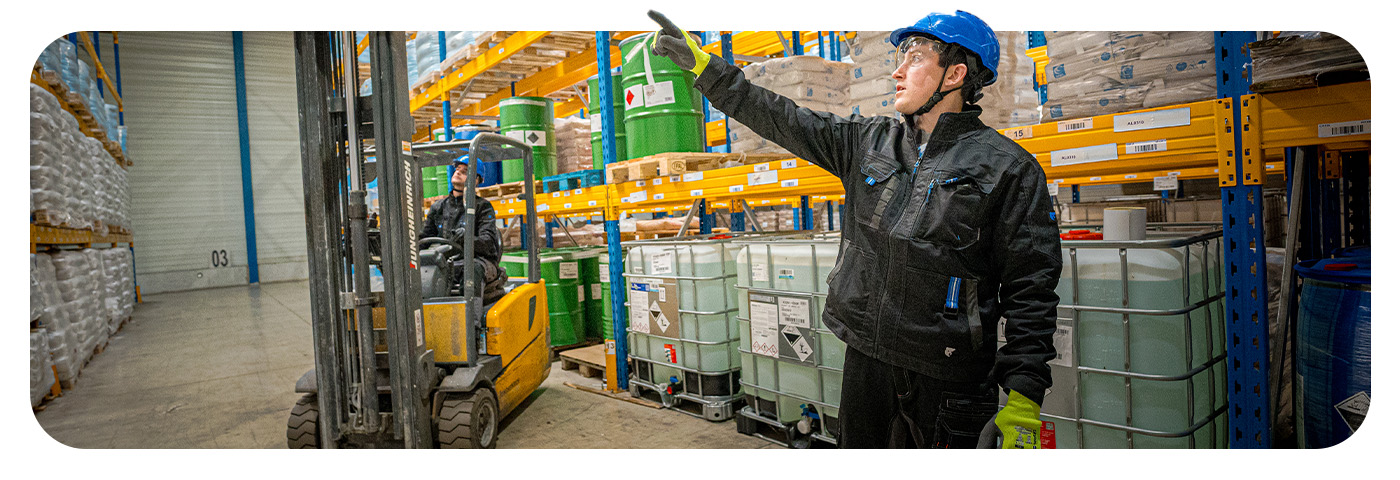Promotional operation "CLEARANCE"
International regulations
Regulation (EU) 2016/425 on personal protective equipment

The Regulation (EU) 2016/425 on personal protective equipments (PPE) defined the 3 PPE types as follows
Includes exclusively the following minimal risks: superficial mechanical injury; contact with cleaning materials of weak action or prolonged contact with water; contact with hot surfaces not exceeding 50°C; damage to the eyes due to exposure to sunlight (other than during observation of the sun); atmospheric conditions that are not of an extreme nature. Manufacturer is allowed to test and self-certify products.
Includes risks other than those listed in Categories I and III. Manufacturer must obtain a EU certificate of conformity from a notified body.
Includes exclusively the risks that may cause very serious consequences such as death or irreversible damage to health relating to the following: substances and mixtures which are hazardous to health; atmospheres with oxygen deficiency; harmful biological agents; ionising radiation; high-temperature environments the effects of which are comparable to those of an air temperature of at least 100°C; low-temperature environments the effects of which are comparable to those of an air temperature of -50°C or less; falling from a height; electric shock and live working; drowning; cuts by hand-held chainsaws; high-pressure jets; bullet wounds or knife stabs; harmful noise. Manufacturer must obtain a EU certificate of conformity and certificates of regular production monitoring from notified bodies.
Reach
The European Regulation REACH n°1907/2006 deals with Registration, Evaluation,Authorisation and Restriction of Chemical substances. The law entered into force on 1 June 2007. REACH rationalizes and improves the old European Union regulatory framework on chemical products.
The main objectives of REACH are to ensure a high level of protection of human health and environment against risks that chemicals may pose, the promotion of alternative testing methods, the free movement of substances within the internal market, and to reinforce competitiveness and innovation.
REACH places responsibility on industry to assess and manage the risks of chemicals and to provide suitable safety information on the substances to their users. At the same time, European Union can take additional measures on Substances of Very High concern (SVHC), when further action is necessary at European level.
As first importer of article (within the meaning of the REACH regulation), we are subject to the requirements of article 33 of the regulation.
Our products certified as PPE in accordance with PPE Regulation 2016/425, comply with Annex XVII on restrictions on manufacturing, placing on the market and use of certain hazardous substances, mixtures, and dangerous articles.
In addition, article 33 of the REACH regulation requires that any supplier of an article which contains a substance identified as Substance of Very High concern (SVHC), in a concentration in the article above 0.1% w/w, has to provide sufficient information to customers to allow safe use of the article.
In order to ensure the application of these requirements in the long term, we commit our suppliers to a process that guarantees the non-use of Substances of Very High concern or, as a minimum, to inform us about their presence in our products and to suggest us a solution of substitution.
Beyond the commitment of our suppliers, in order to ensure strict control, we work closely with several testing laboratories to control the absence of SVHC in our products.
You can find the list of SVHC on the ECHA website
Dual-use goods
General information
The EC regulation 428/2009 prohibits the export of dual-use goods to the French Overseas Territories and to countries outside the European Union without prior authorization from the Dual-Use Goods Department (SBDU).
Any export of a Dual-Use item to the French Overseas Territories and to countries outside the European Union without prior authorization constitutes an infringement of article 38 of the national customs code.
This is then a deemed non-declared export of prohibited goods. This 1st class customs offence sanctioned by article 414 of the customs code is punishable by a maximum of 3 years imprisonment, confiscation of the object of the fraud and a fine of between 1 and 2 times the value of the goods.
On the other hand, it is possible to freely export dual-use goods directly to the Overseas Departments (Guadeloupe, Guyana, Reunion, Martinique and Mayotte) as well as to the EU countries.
All exports to countries subject to authorization must be applied for through an individual license to the dual-use department by Coverguard. Please contact your commercial or customer service representative to confirm the possibility and the necessary documents.
Concerned products
Find the list of concerned articles in our ranges. These products are identified with “BDU” term in the respective product sheets.
Regulations links
Dual-use goods department website
EU regulation











